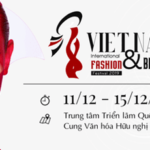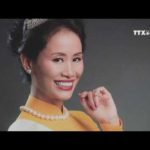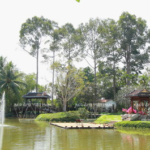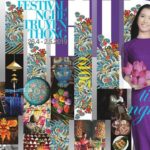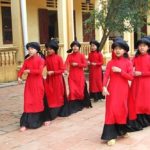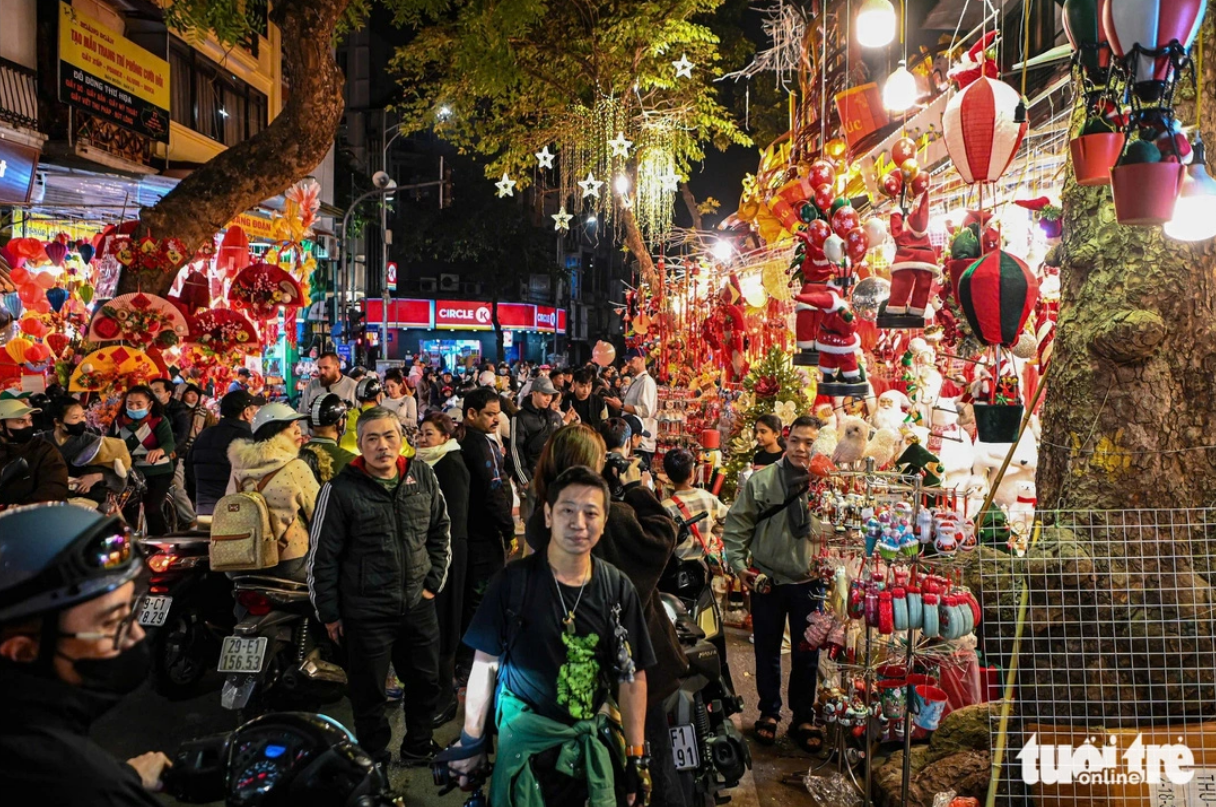Epitomizing the elegance and grace of Vietnamese women, the ao dai (long traditional dress) is a timeless fashion statement. Regardless of prevailing trends, the ao dai will always hold its place as a distinguished classic.
A Unique Symbol for Tourism
Vietnamese beauty queen Ngoc Han wearing a ao dai costume, designed by herself.
Photo: Ngoc Han BoutiqueWhile it was initially worn as everyday clothing by Vietnamese people for centuries, today the ao dai is commonly reserved for formal occasions such as weddings, Tet holiday celebrations, festivals, and diplomatic events. In southern provinces, it is even the mandatory uniform for female teachers and high school students. Additionally, flight attendants, receptionists, bank tellers, restaurant staff, and hotel workers in Vietnam are often seen donning this attire.
Despite its prevalence, the ao dai is still awaiting official recognition as a “national costume” or “national cultural heritage.”
Renowned fashion designer Minh Hanh is an ardent advocate of the ao dai and actively promotes it at various diplomatic events. She has organized numerous ao dai shows for international guests. “The ao dai possesses eternal charm, and the materials used to create them perpetually captivate the world. Even now, the ao dai retains its international allure,” she attests.
This stunning brocade ao dai outfit designed by Minh Hanh showcases the beauty of the dress.
Photo: Nguoi Lao DongHowever, as designer Ngoc Han notes, there is still a lack of systematic strategies to transform this iconic attire into a cultural or tourism brand, unlike the South Koreans with their hanbok. “The South Koreans have done a fantastic job promoting the hanbok. Every traveler visiting their country wants to purchase a hanbok as a souvenir or rent one to wear and take selfies with. For example, a ticket to Gyeongbokgung Palace in Seoul costs about 3,000 won. However, tourists are granted free admission if they choose to rent and wear a hanbok when visiting the site,” she explains.
“We also boast a plethora of culturally significant sites, such as Hue City, Thang Long Citadel, and world-renowned destinations like Ha Long and Trang An. Yet, we have yet to establish stalls to display or rent ao dai, nor have we implemented perks similar to Gyeongbokgung Palace for ao dai wearers. Imagine tourists being entitled to free entry to Hue Imperial City and Thang Long Imperial Citadel if they wear an ao dai,” Ngoc Han adds.
Contestants of Miss Grand International 2023 wearing Vietnamese ao dai costumes.
Photo: MGIThese are the promotion strategies that the ao dai fervently seeks. Inviting involvement from relevant authorities in various fields is crucial to crafting new narratives for the iconic dress.
In particular, music videos, movies, songs, and inspirational stories play a pivotal role in continuing to convey the cultural significance, traditional beauty, and timeless allure of Vietnamese women through the passage of time, all of which make the ao dai an emblematic symbol.
A Delicate Garment Boasting Cultural and Economic Potential
Many foreign visitors, including prominent figures, have expressed their deep affinity for the ao dai when visiting Vietnam. They not only enjoy wearing this unique attire for photos but also purchase it as a special souvenir for their loved ones. Various international fashion weeks have invited Vietnamese ao dai brands to showcase their collections.
According to designer Minh Hanh, the economic potential of the ao dai is immense. In addition to the readily available and popular materials, there are also traditional fabrics that are meticulously handwoven and dyed by Vietnamese artisans.
The “Vietnam’s Ao Dai Week in Fukuoka” held in January 2024 showcases the beauty of Vietnamese costumes dating back hundreds of years.
Photo: Ngoc Han Boutique“I have proudly presented brocade ao dai, silk ao dai, hand-embroidered ao dai, and other unique creations at numerous international exhibitions. Audiences are captivated by traditional Vietnamese fabrics. Many international guests have expressed their astonishment at the delicate beauty of our brocades and the intricate weaving techniques used by the H’Mong and Ta-oi people,” she recalls.
Brocade is a distinct type of fabric, intricately woven and dyed by artisans. Minh Hanh believes that brocade, with its inherent uniqueness, is particularly suited for high-end fashion. With materials that embody national identity, such as brocade or silk, traditional Vietnamese fabrics can be spotlighted worldwide through the medium of the ao dai.
“Furthermore, the utilization of traditional garment materials will be a prerequisite for the development of the textile and fashion industry as a leading economic sector in the future,” she adds.
The Ao Dai fashion show entitled “Where I Was Born” took place at the Temple of Literature.
Photo: Di tich Van Mieu Quoc Tu GiamMany countries worldwide have capitalized on their traditional materials, such as Japan with kimono fabrics, Indonesia with batik, France with lace, and India with sari fabrics. Materials act as distinctive symbols that are easily recognized and associated with a particular people or country,” Minh Hanh points out.
Therefore, the pathway to global recognition remains open for the ao dai and traditional Vietnamese fabrics. Once effective promotion strategies are devised and implemented, this garment will transcend its role as a cultural ambassador and emerge as a time-honored cultural brand of Vietnam, captivating admirers from all corners of the world.
Hanoi woman spreads love for Ao Dai
Whenever wearing Vietnamese traditional long dress, ao dài, all Vietnamese women feel the special beauty and attractiveness of the costume. Ao Dai, for them, is not only a kind of dress but also a way to express their emotion and feeling. Let’s meet a Hanoi woman who shares a special love for Ao Dai!
Vietnam’s First Ao dai Museum
A museum dedicated to showcasing only Ao dai (a traditional Vietnamese dress) through various periods and the process of making them has opened in Ho Chi Minh City’s District 9.






